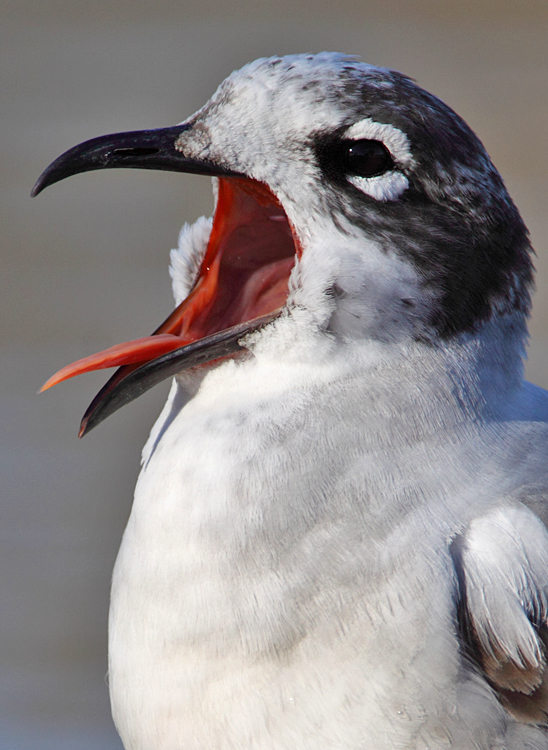
Date: 2008-12-06
Lens: Canon 600mm IS F4 + 1.4x II Converter

 Franklin's Gull
Larus pipixcan
Franklin's Gull
Larus pipixcan
 Description
DescriptionThe Franklin's Gull is a common sight in the interior of North America. Flocks of these small gulls will follow plows to feed on exposed worms, insects and mice. Flying insects are often caught on the wing. The Franklin's Gull is named after Sir John Franklin, an explorer looking for the Northwest Passage, who collected the first bird for science.
General: 13 to 14 inches in length. Sexes similar; males are slightly larger.
Adult Alternate: Black head. Dark eyes with thick white crescents above and below that join at rear. Bill dark blood-red with dark subterminal band. Pale gray back. White underparts; may have pinkish wash. Gray wings with large white band and black-and-white tips. Legs dark to red-orange.
Adult Basic: Similar to adult alternate plumage except with white face and blackish half-hood at the rear of the head. Dark, splotchy crown. Blackish or reddish bill with orangish-red tip. Brownish-black legs.
Juvenile: Crown, ear area, and nape are dark gray; remainder of head and throat is white. White crescents above and below eyes. Dusky wash along sides of neck and chest. White underparts. Back and wings are grayish-brown. Pale-gray tail with black subterminal band and white outer feathers.
First Winter (Basic): Whitish head with dark half-hood including eyes. Thick eye crescents, usually joining at rear. White underparts. Gray back. Brown wings. Tail white at base with broad blackish subterminal band and white outer tail feathers.
First Summer (Alternate): Similar to adult basic.
Coastal bays, estuaries, and along sandy beaches. Nests in marshes and along inland lakes.
 Nesting
Nesting1-3 greenish-brown eggs with dark splotches. The eggs have a 24-25 day incubation period. Fledging occurs in 32 days. The nest is a floating platform of vegetation, placed in thick reeds above water. Nests in colonies.